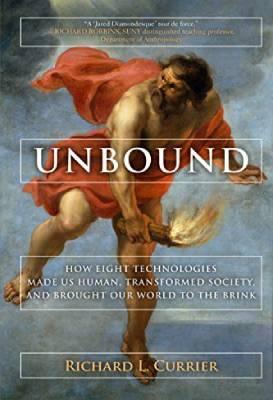Unbound: How Eight Technologies Made Us Human and Brought Our World to the Brink

Why the human story is a stack of tools, and why that matters now
Reason to read: A clear, chronological map of eight technologies that shaped our species and the risks they now compound. Useful if you build systems, lead teams, or make policy choices under real-world constraints.
Currier starts with our primate baseline and shows how each layer of technology widens the circle of what humans can do. Spears and digging sticks, fire, clothing and shelter, symbolic communication, agriculture, technologies of interaction, precision machinery, and digital information. The argument is simple and persuasive. Each step removes a natural limit, then creates new feedback loops that speed cultural evolution. The writing is brisk, the scope is wide, and the examples land without getting lost in jargon.
Three takeaways stood out. First, look for enabling layers rather than shiny gadgets. Tools matter most when they lower costs across many activities, which is why fire, language, and later networks changed the pace of everything. Second, every breakthrough shifts risk. Clothing and shelter unlocked migration and survival, but also larger populations that demand food, energy, and coordination. Digital information scales reach and speed, which multiplies both cooperation and error. Third, treat governance as part of the technology. When interactions scale, the default settings of money, media, and markets become design choices that shape behaviour and outcomes.
This is not a technical manual. It is a practical lens for judging which ideas add durable capability and which ones push us closer to the edge.
Verdict: Big-sweep history with actionable signals, worth an afternoon.